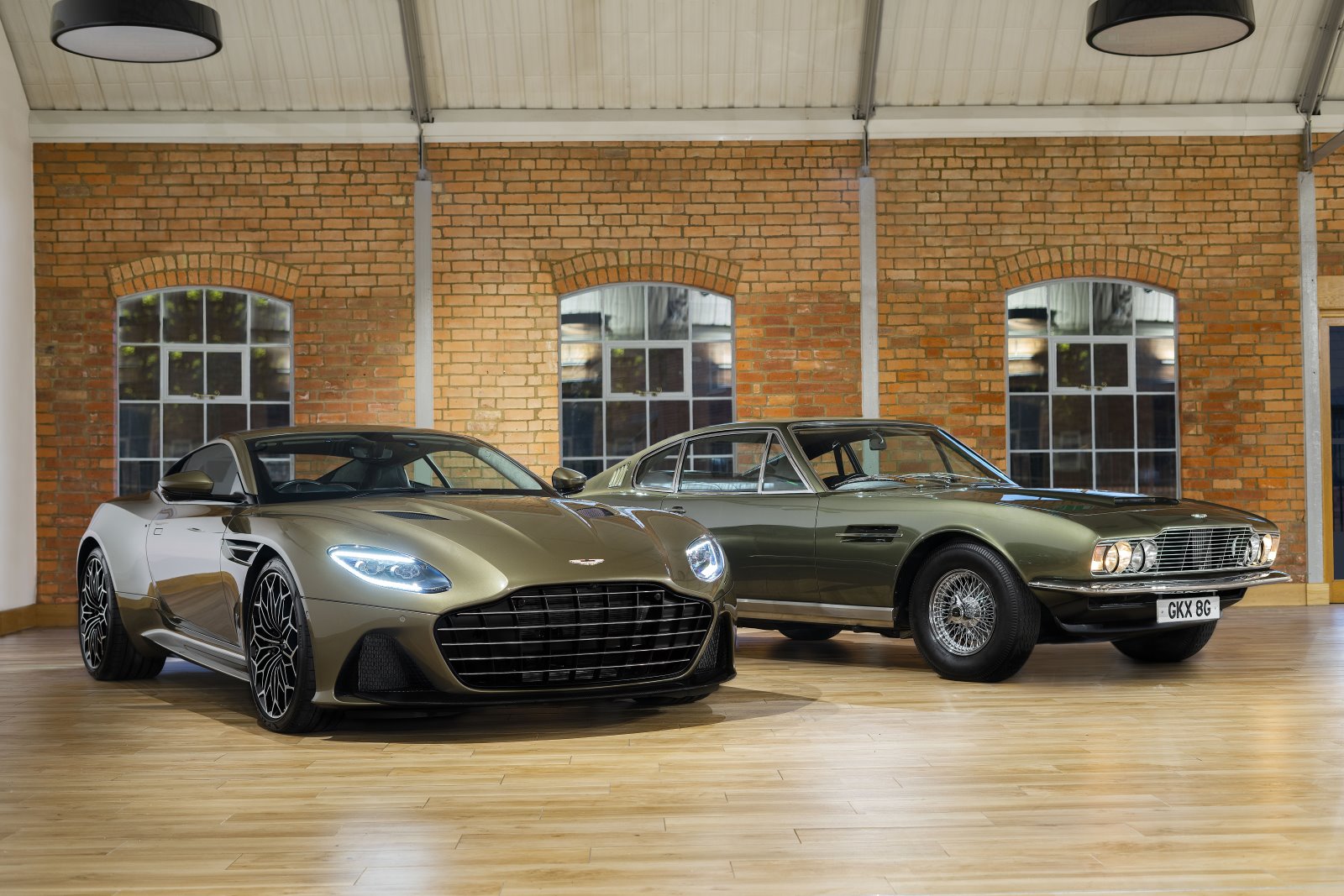
LIVING With a 50th anniversary limited edition based around its potent V12 DBS Superleggera, Aston Martin pays tribute to a Bond car, one that isn’t as well known as the DB5 from Goldfinger, but which deserves to be considered alongside it, says Jack Yan
Photographed by Dominic Fraser and courtesy Aston Martin
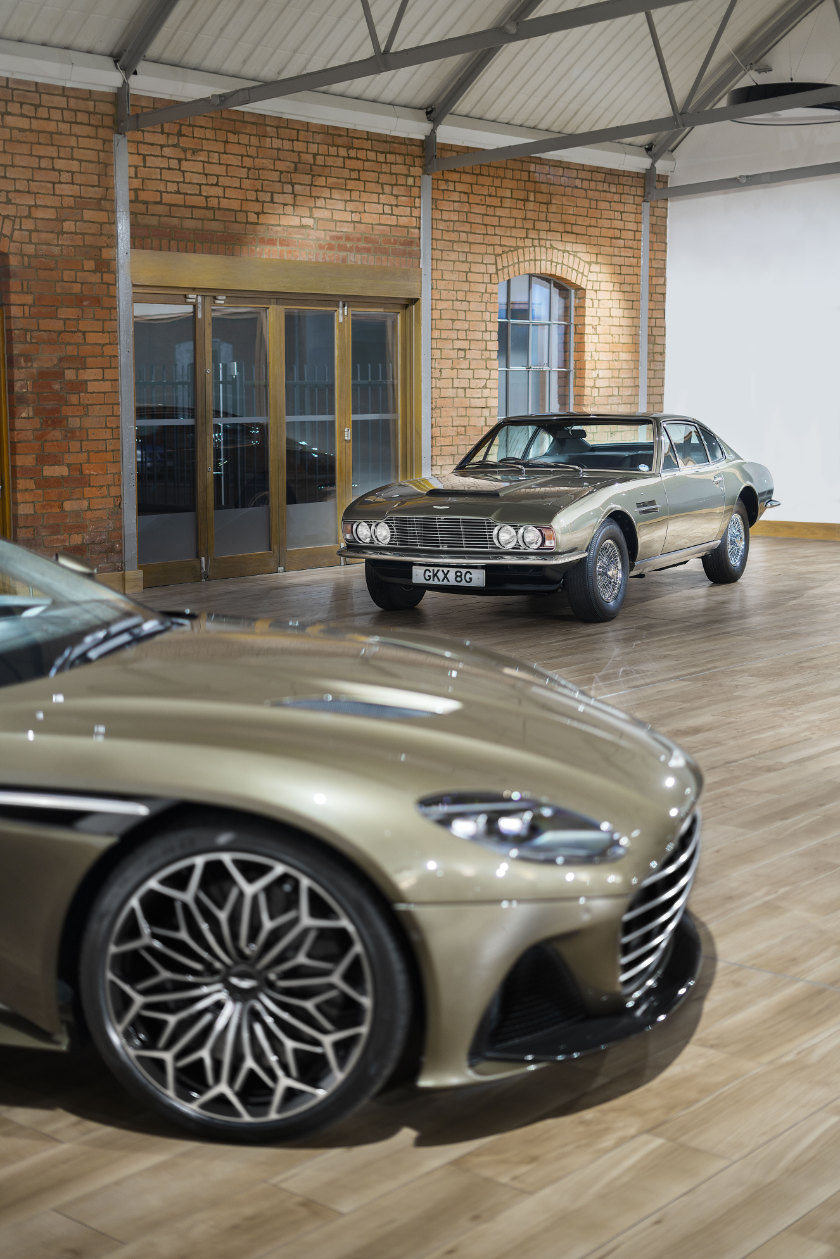
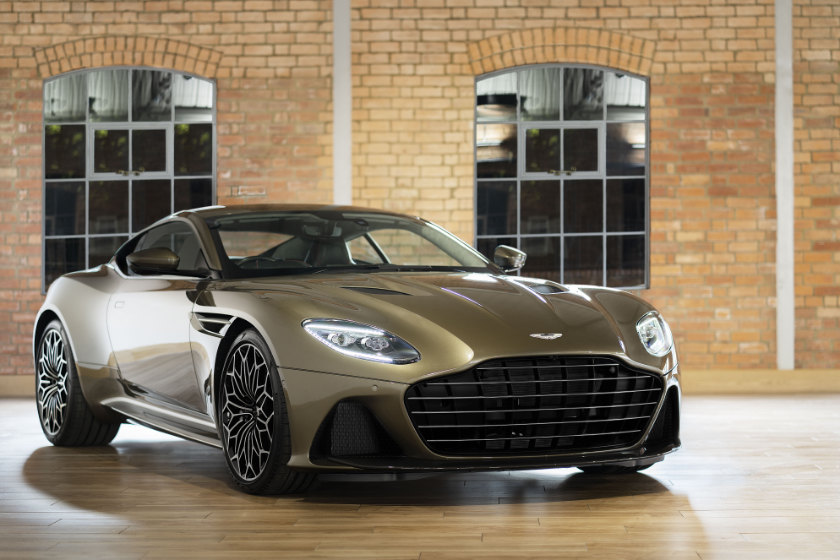
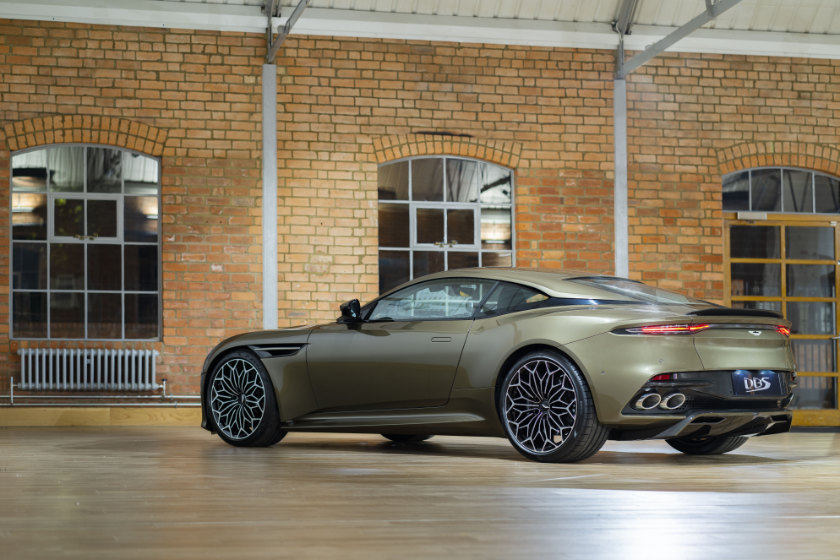
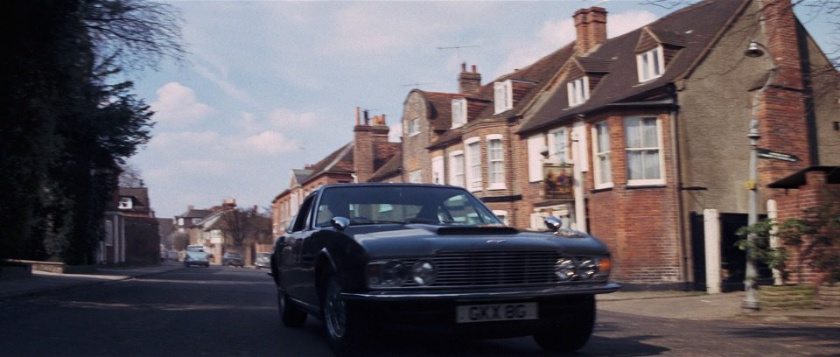
Aston Martin’s new DBS Superleggera OHMSS Edition, pictured alongside the original from the 1969 James Bond film, On Her Majesty’s Secret Service. Above: The DBS as it appeared in the film.
Jack Yan is publisher of Lucire.
On Her Majesty’s Secret Service is one of those Bond films that you either love or hate. With Peter Hunt directing, there was a desire to bring things back to Ian Fleming, especially after the Roald Dahl-scripted, fantastic adventure of You Only Live Twice, which bore little resemblance to the book. Considered one of Fleming’s finest in the Bond canon, On Her Majesty’s Secret Service would have been the perfect film to cap off the 1960s, had Sean Connery not quit during the film before.
A spoiler follows after the next paragraph for those who haven’t seen it.
Imagine this outing, the sixth instalment in the “official” cinematic Bonds, seeing the actor that everyone had come to associate as James Bond in a role that required depth as the character meets Tracy, a woman who would steal his heart where other Bond women didn’t.
And with the newly married Tracy Bond gunned down by Blofeld at the end of the film, audiences would have wept with our hero, and the 1960s would be well and truly over.
In this alternative history, maybe the Bonds wouldn’t have continued after all—as George Lazenby, the man who would play James Bond this time out, remarked, the film of 1969 was Easy Rider. This was a time of “make love, not war”, and ‘Bond was war,’ he recalled. Would Connery have tired of the character after six, leaving it in the hands of a successor for the 1970s? Or would audiences have continued to flock to the films, for, in their day, they were cinematic “events”, regardless of who the star was?
We’ll never know, but one thing we can probably agree on is that On Her Majesty’s Secret Service is the most lavish-looking of the 1960s Bonds. Stylistically, it took the design themes of the decade and brought them to their natural conclusion. There were no flares, even if lapels and sideburns were growing. We experimented with colours, but they hadn’t all been muddied with browns and mustards. There were no loud checks and permed hair for the gents. And 1969 was a great year for car design, too: the curvy bodywork of the decade was departing in favour of something more razor-sharp and voluminous, but we were still a couple of years away from the most garish chrome grilles of Detroit, the worst of the Bunkie Knudsen-era beaks and the heavy, vinyl-roofed C-pillars that made automotive cabins into padded dens. Nineteen sixty-nine still had the bright lights shining in design: the Peugeot 504 had scooped the European Car of the Year award to kick things off, the Mercury Cougar had received its first new body, with more bulk and the addition of a convertible, and Aston Martin was a couple of years into selling the DBS, a contemporary rethink of the DB4 to DB6 generation, with crisper lines by William Towns, and the traditional grille reimagined as a full-width unit that housed dual headlamps at each end. This was also the time of the Lamborghini Espada and the Maserati Ghibli, cars that weren’t ashamed of showing raw power, because no one had foreseen the fuel crisis that was four years away.
Diana Rigg and Telly Savalas joined the inexperienced Lazenby in this outing, to this writer perfectly cast in the roles of the doomed Tracy and Ernst Stavro Blofeld—Savalas was arguably closest to Fleming’s conception of the character as a fit opponent to Bond, rather than a smaller, intellectual man in the Donald Pleasence mould, or the old world charm of Charles Gray. And when Lazenby is introduced, he is piloting the Aston Martin DBS in olive green, saying to audiences that this is still James Bond, but a new James Bond who’s updated and in tune with the late 1960s, maybe even ready for the 1970s. (The Australian-born Lazenby could easily fight along with the stunt performers—he broke Yuri Borienko’s nose when he auditioned for the role—and was the most athletic Bond till Daniel Craig; and he could well have taken Bond into the 1970s if he chose, with something far less camp than what became Diamonds Are Forever, but bad decisions and influences intervened, as they often do when success comes suddenly.)
The OHMSS sound department gives the new Bond’s DBS a more roaring sound than the straight-six (effectively carried over from the old DB6) could actually command, and as Bond gives chase to Tracy on the Portuguese coast in her Mercury Cougar (it was a Lancia in the book), it was a duel of cars that looked purposeful, possibly with big engines: after all, the DBS had been designed to accommodate a new V8 by Tadek Marek, but which wasn’t ready when the rest of the car was.
The six was still no slouch, producing 325 hp (as measured then), though Marek had been experimenting with his V8 was early as 1965, within a DB5 test car. The V8 would be shown in 1969 at the London Motor Show, and would survive into the late 1980s, the mainstay of Aston Martin production through a very bleak era in the decade ahead.
This is a long-winded way of saying that the DBS in On Her Majesty’s Secret Service made an impression as the transport of 007, and while it didn’t become an instant gadget-packed Corgi toy that caught the imaginations of children at the time (the Corgi model came many years later, and for collectors), it deserves to be known as a real Bond car, alongside the Goldfinger DB5 and the submersible Lotus Esprit, and certainly ahead of the 1·9-litre BMW Z3 in Goldeneye.
With the 50th anniversary of the film, Aston Martin is paying tribute to the most famous DBS of them all (Persuaders fans may dispute this), just as TAG Heuer celebrates the half-century of another design classic, the Monaco watch. In fact, they are both being fêted the same week. This week, Aston Martin has announced a limited run of 50 DBS Superleggera models, for delivery from the fourth quarter of 2019. The modern DBS Superleggera has more than twice the horsepower of Bond’s original (now at 725 PS thanks to twin turbochargers; torque is at 900 Nm), with twice the cylinders (it’s a V12), but is finished in the same olive green shade. Aston Martin describes it as a ‘brute in a suit’, which perhaps sums up the original DBS’s appearance in On Her Majesty’s Secret Service well; it also describes both Connery and Lazenby to some degree. Get the DBS Superleggera into one of its dynamic modes, and there’s an urgent sound emanating from its tailpipes, yet it’s the perfect car for the grand European tour, or round the tricky bends near the Hotel Palácio Estoril.
Outside, the new car has six vanes on the grille to recall the earlier model. Its unique diamond-turned and forged 21-inch wheels, on Pirelli P Zero rubber, could well be a 2019 interpretation of classic wire wheels. There’s an OHMSS Edition script in the side strake, though set in Optima, Aston Martin’s usual, off-the-shelf typeface, rather than something from the film itself. Inside, there’s pure black leather trim, accented with grey Alcantra, as with the 1960s original. The red accents are inspired by the red trim inside the OHMSS DBS glovebox; and there’s red felt lining for stowage. A bespoke sill plaque reminds you that this is not the “ordinary” DBS Superleggera. There’s a Bang & Olufsen BeoSound audio system, but, sadly, the infotainment is typeset in Arial, befitting a cheaper Chinese car and not Her Majesty’s Secret Service. With so much attention to detail lavished elsewhere, there are still a few of those reminders that Aston Martin once did have elements shared with more common cars (the original DBS’s rear lights were from the Hillman Hunter).
There is an optional bespoke drinks’ case for the boot, with space for two bottles of champagne and four flutes, but Aston Martin does not mention a telescopic rifle case, which Bond has in the film.
The price is an imaginative £300,007. We advise purchasing tracks from John Barry’s score to complement your drive. •
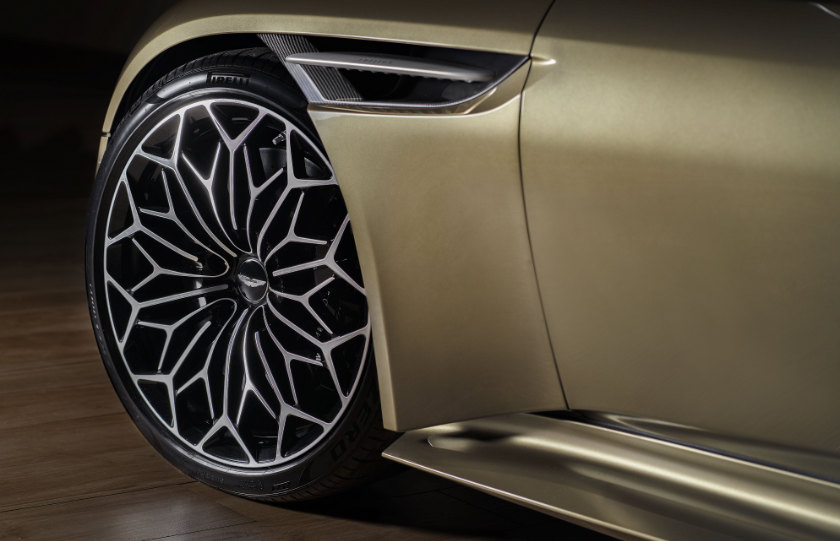
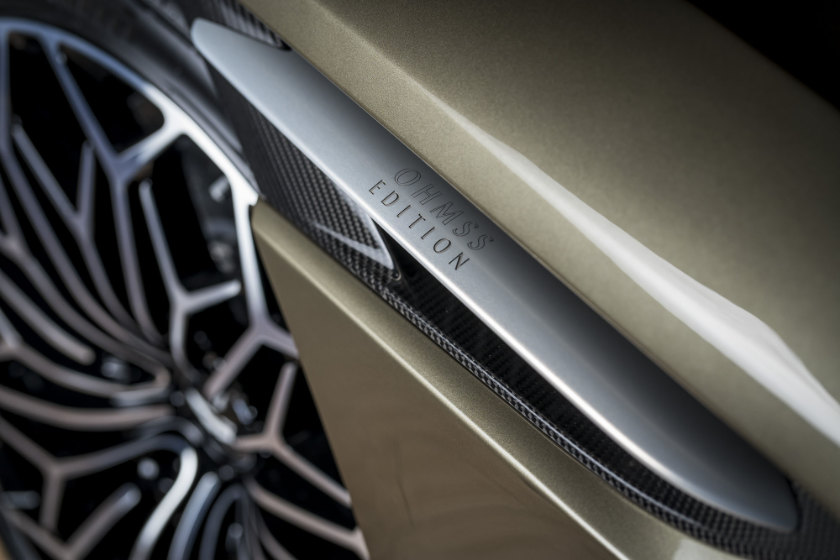
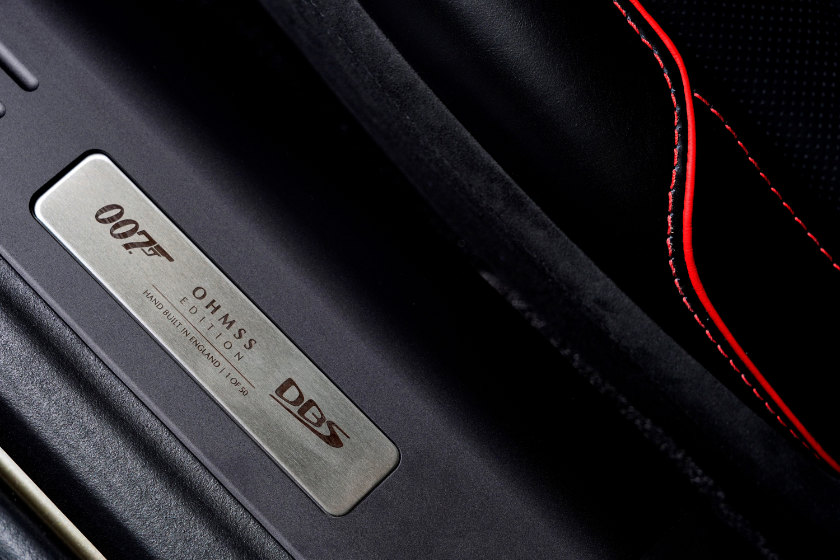
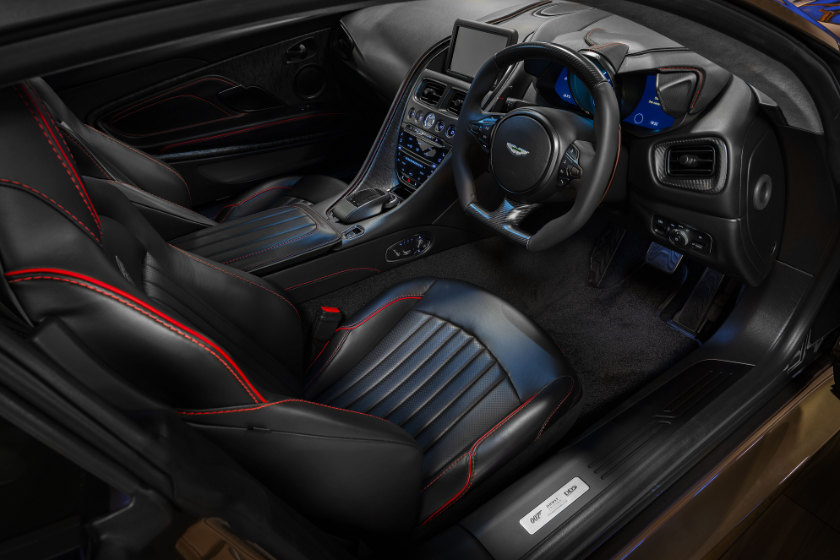
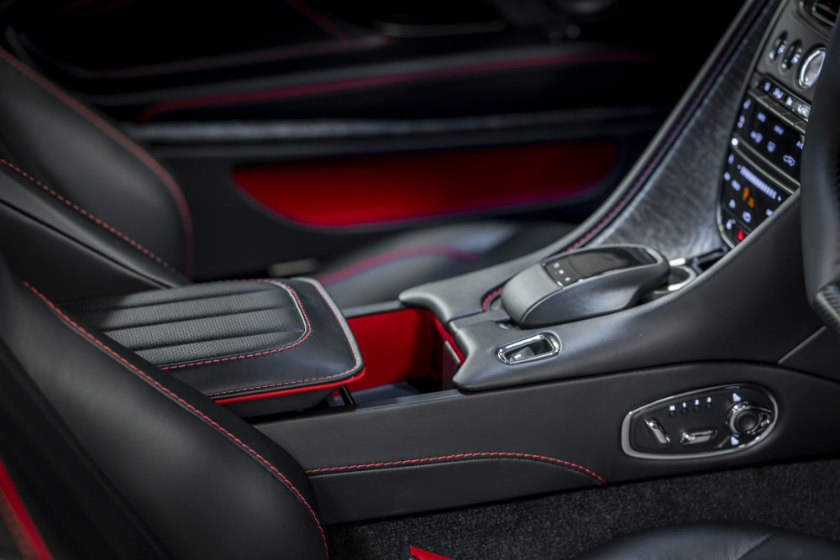
Related articles hand-picked by our editors
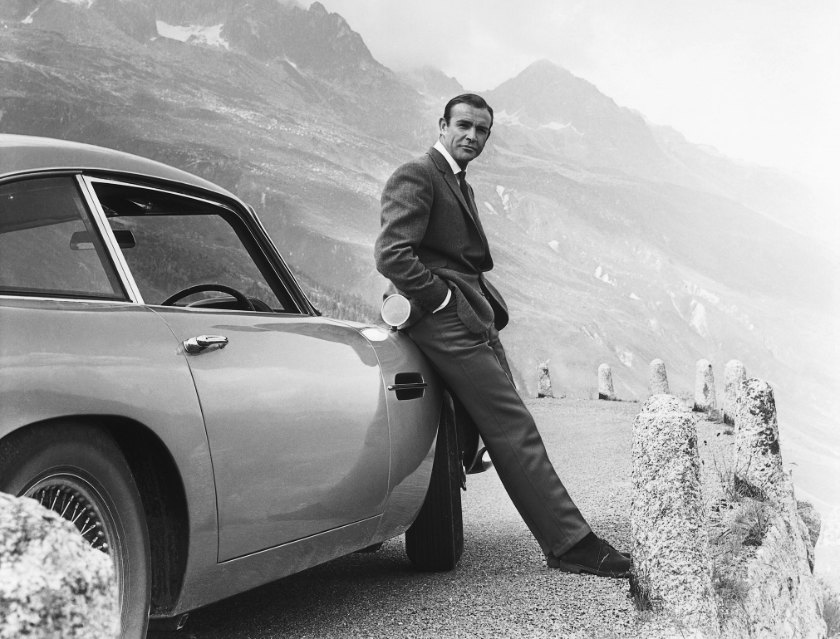
Designing 007 opens at the Barbican in July, covering 50 years of James Bond design
With the 50th anniversary of the cinematic James Bond, exhibitions are being shown around the world to mark the occasion, but the Barbican Centre finally has one on the design aspects, including fashion and graphics
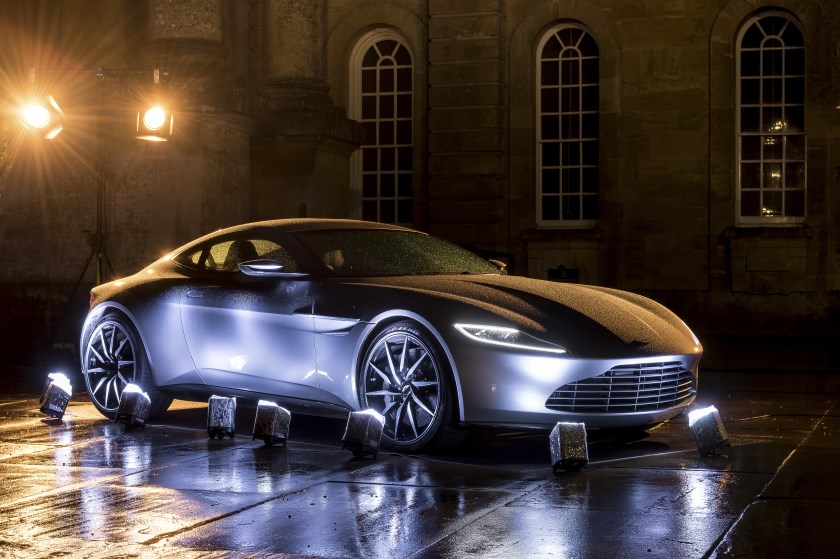
Aston Martin premières film on its Spectre James Bond car, the DB10, at Blenheim Palace event
If you’re going to go to the trouble of creating a bespoke car that’s never going to be sold to the public, but will be seen by most only in a film, then you should find a way to show off that effort to your VIPs
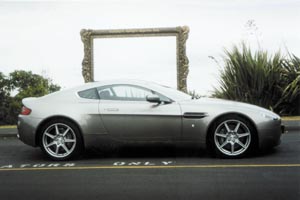 Thoughts in a V8
Thoughts in a V8
Jack Yan fulfils a childhood fantasy, but where were Pussy Galore and the
ejector seat?
Photographed by the author
From issue 16 of Lucire
Advertisement
Copyright ©1997–2022 by JY&A Media, part of Jack Yan & Associates. All rights reserved. JY&A terms and conditions and privacy policy apply to viewing this site. All prices in US dollars except where indicated. Contact us here.